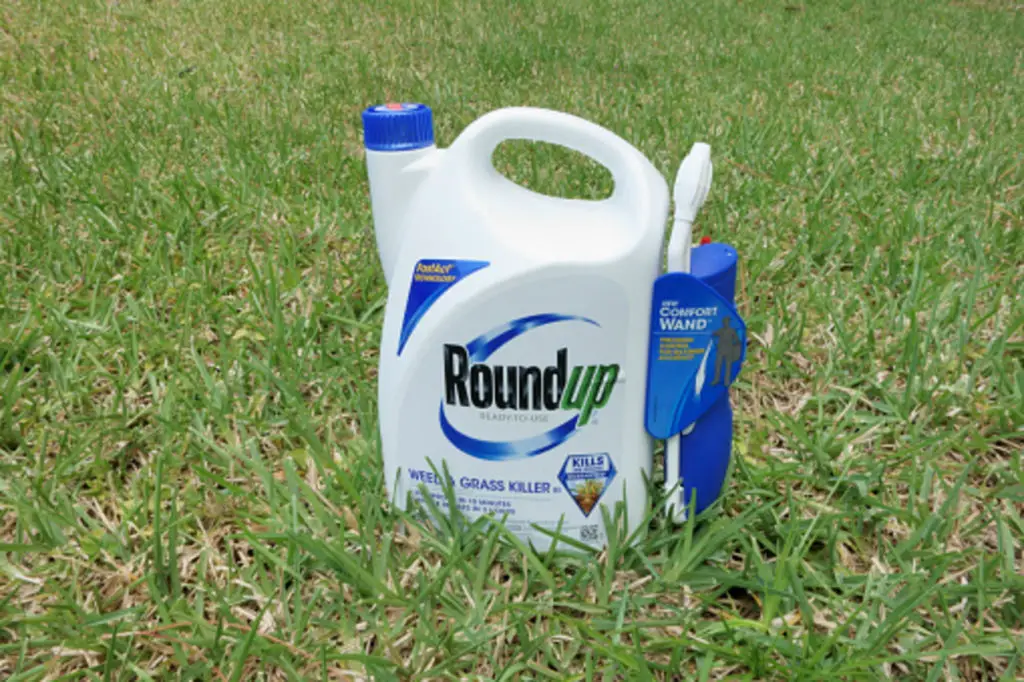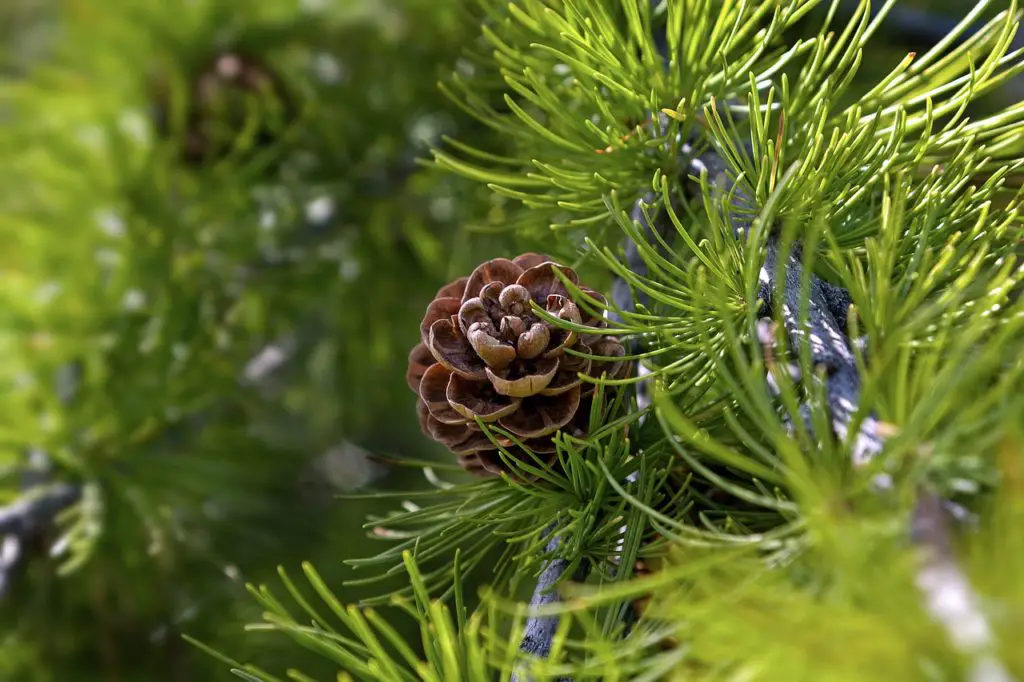Although mulching helps prevent weeds in gardens, it’s not enough to completely keep them out. A herbicide may be the best option for optimal results. But, how soon can I mulch after spraying roundup? You ask!
Roundup is a herbicide whose active ingredient is glyphosate. It kills and eliminates weeds. After a week, you can safely apply mulch on a garden sprayed with Roundup. Mulching controls weeds, but some can poke out of the mulch. When it’s combined with herbicide, you ensure complete weed eradication.
Read on to find out the ideal time to apply Roundup. Additionally, you’ll learn the safety tips to apply when using the herbicide and how long it stays active in the soil.
But…
Also Check – Best Mulch for Vegetable Garden
What Is Roundup?
Roundup is a broad-spectrum herbicide that contains water-soluble ingredients, a wetting agent, and glyphosate. You spray it on the weeds’ leaves which then absorb the chemicals. Eventually, the weeds die as poison in the sap moves throughout the plant.
Roundup kills desirable plants in a garden. Even so, it should be applied carefully. Roundup contains glyphosate, which is poisonous to plants. Ten days after application, the leaves usually turn yellow and eventually die.
Glyphosate also stops protein production, which is essential for the growth of weeds. It’s important to note only by the weed coming into direct contact with glyphosate does it die. Roundup acts on the woody part and leaves of plants only.
When Is The Best Time To Apply Roundup?
The best time to apply Roundup to your garden is springtime. During this time, plants grow, and the sap moves quickly throughout the plant. Roundup is usually most active when it instantly moves to the weeds’ roots.
Also, the weather is conducive for optimal penetration of the herbicide into the weeds.
In spring, you’ll catch the weeds in the pre-growth season and thus stop them from sprouting and flowering. Manage annual weeds when they’re young to use the least amount of Roundup possible and prevent them from seeding.
Apply Roundup when the forecast shows it won’t rain for at least 6 hours; otherwise, the rain dilutes the chemical. As a result, the herbicide becomes less effective when absorbed by the plants.
Additionally, choose a day when the weather is calm to avoid your herbicide from being blown away by the wind. A gust of wind is likely to blow the spray away from the targeted specific area.
Another primary reason you should apply Roundup in Spring is that hot weather interferes with the effectiveness of the herbicide. It encourages weed hardiness, which lessens the herbicide movement into and throughout the weed.
Weeds break down Roundup using their metabolism. However, during the cold season, the metabolism slows down. Therefore, it extends the time it takes the weed to react to the chemical. So, the application of Roundup during cold weather isn’t practical.
How Long Does Roundup Stay Active In The Soil?
Roundup stays active in the soil for a minimum of 6 months. According to the United States Department of Agriculture, the half-life of the active ingredient glyphosate in soil ranges between 3 and 249 days.
However, other studies have drawn different conclusions. The consensus settled on at least six months.
Roundup kills weeds when sprayed on the leaves directly rather than poured into the soil. Nevertheless, it spills into the ground and sticks to that area as you spray.
Eventually, the bacteria in the soil help Roundup break down into nitrogen and harmless carbon dioxide.
The precise time it takes to break down in the soil is still being debated in the scientific world. The period depends on environmental conditions such as humidity and the volume of rain. Additionally, the amount of Roundup spilled and the strength of the soil is vital.
Safety Tips For Applying Roundup
One general tip applied when using any herbicide, including Roundup, is to ensure you correctly use and apply the product. Proper application of Roundup leaves your mulched landscape with a weed-free, flawless and polished final look.
Besides, you’ll keep yourself, your loved ones, desirable plants, pets, and the environment safe.
So, here are the safety tips for applying roundup:
Read the product’s manual carefully: Follow the mixing and application instructions to the letter.
It’s best to wear protective attire: Keep yourself safe by wearing protective clothing, such as gloves, long sleeve tops, and pants to protect your skin from the herbicide. Additionally, put on safety goggles as a safety measure for your eyes.
Check the environment: To maintain your environment and keep it safe, don’t use Roundup close to a waterbody, drainage system, gutter, or ditch where runoff happens.
Use the recommended application tools: Don’t use a sprayer made of galvanized or unlined steel to apply Roundup. Instead, choose a stainless or plastic-lined steel, fiberglass, or plastic tank sprayer.
Avoid application on a rainy day: Apply Roundup on a sunny, windless day when there’s no rain in the forecast to achieve the best results. When spraying the targeted weeds, cover them entirely with the solution.
Protect desirable plants: Use cardboard to protect any desirable plant from the herbicide. However, if the cardboard isn’t available, you can use a paintbrush to apply Roundup onto the weeds. This way, you’ll not even touch any of your other plants.
Nonetheless, if the plants get accidentally sprayed on, quickly rinse the chemical with water. Better still, test the spray design on a driveway to ensure you got the proper nozzle adjustments. This way, you won’t end up spraying non-targeted plants.
Give Roundup enough time to dry: Allow the herbicide to dry completely before allowing your kids and pets into the garden.
Wash your hands: Thoroughly clean your hands after handling Roundup.
Clean the clothes: After the Roundup application, don’t mix the protective attires with other dirty clothes. The chemical is dangerous and should be treated as such. So, wash those clothes immediately after application.
How Soon Can I Mulch After Spraying Roundup?
You can mulch a week after spraying Roundup. Once the weeds are dead, you can safely apply the mulch.
Roundup works on the principle that the active ingredient has to come into contact with the stem and leaves of the weeds. It works best on weeds that have sprouted and are about to flower.
Roundup is effective if you give the herbicide enough time to infiltrate the wild plants thoroughly. It’s necessary to kill the top growth of the weeds and the roots to eliminate the risk of weeds re-sprouting.
Thankfully, seven days are enough for glyphosate to spread to the roots and kill the plants fully.
However, once you spray the weeds, they’re poisoned and are bound to die even under the mulch.
You can, therefore, mulch even if all the weeds aren’t dead, plus you can spot-spray whatever later pops up.
Can You Put Mulch Over Weeds To Kill Them?
Mulching helps to control weeds by acting as a physical barrier. It blocks sunlight which weeds require to thrive. Apply a thick layer of 2-3 inches of mulch. Replenish it regularly if weather elements such as strong winds and rain displace it to maintain the necessary depth.
Nonetheless, some weeds still manage to grow through the mulch, which is why it’s advisable also to use herbicide. Dig up any weeds before mulching and spray spot-on any weed you see poking through the mulch.
When you apply mulch to gardens that have been hand-weeded, it usually prevents weeds from seeding again and re-emerging. Nevertheless, a thick layer of mulch can eventually smother weeds and kill off their roots.
FAQs
Can I Use Roundup In My Vegetable Garden?
You can use Roundup in your vegetable garden, but you need to apply it carefully according to the given instructions. It’s vital noting that if it’s spilled on your plants, it will kill them as well. Therefore, you need to protect and cover the desirable plants in your garden lest they become casualties as well.
How much Roundup Should I Apply?
The amount of roundup to apply depends on the height of the plants.
Here’s what I’m saying – to kill grasses and annual weeds shorter than 6 inches, you need a 1% Roundup solution. However, to manage taller unwanted plants, apply a 2% solution. You require 3-5% of the Roundup for sustained grasses and weeds.
Too much Roundup can be harmful, while too little can be ineffective in killing wild plants.
Wrapping Up
During your mulching project, it’s common to hear people asking me, “How soon can I mulch after spraying Roundup?”
I’ve, therefore, answered the question comprehensively. But here’s a recap: On its own, mulch inhibits weed growth by smothering and denying them sunshine. However, spraying the weeds with Roundup before installing mulch ensures that none later pops up.
Springtime is the ideal season to spray Roundup.
During this time, the weeds are almost flowering; hence the herbicide prevents them from seeding.
A week-long break after spraying the weedkiller is sufficient to begin mulching. Proper application of Roundup leaves your mulched landscape with a weed-free and flawless final look.


